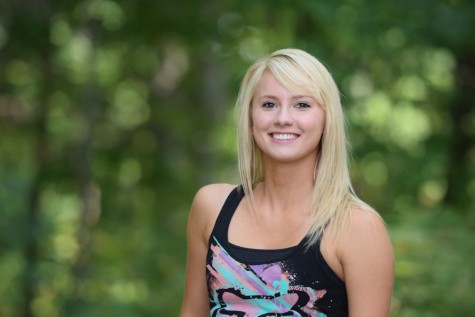
My name's Carly Crofcheck. I've been in the Tyrone Eagle Eye for four years and I'm a Senior at TAHS. Last year I was the Editor in Chief, this year...
April 26, 2016
When the cars opened from the outside, many of the people locked inside let out a sigh of relief that now they were going to have fresh air and water.
“Except for us, there was no water and the air was nauseating,” said Olsson. “We couldn’t relate it to anything. There was smoke coming out of the chimney, high towers, machine guns. I turned to my mum and I said, ‘This doesn’t look like a brick factory.’ No, Auschwitz was not a brick factory, it was a killing factory. The smell that we smelled was the smell of human flesh burning.”
Everyone that was sent to the factory was sent through a selection process. The guards wouldn’t speak, they only pointed left and right. Olsson was sent to the right, her family to the left. She didn’t know where her family was going to be sent. When she turned to look for her mom, it was too late.
“When I didn’t see her I wished I could give her a hug and tell her how much I love her.”
The women and children on the left were forced into gas chambers.
“After 20 minutes it was silent. The poison came out of the shower heads. Children died 1st, their heads were crushed because other bodies fell on them. Some that were still breathing after 20 minutes were shot, and after that the dead women were pulled out of the gas chamber and their heads were cut off, human hair was shipped to Germany to manufacture socks for U-boat soldiers,” Olsson said.
Six million Jews and five million non-Jews including gypsies, political activists, priests and nuns were killed. Burned, gassed or starved to death.
“Among the 11 million were 1.5 million children who were brutally and systematically annihilated by those Nazi bullies,” said Olsson.
Gypsy children were used as medical experiments, including sewn together twins back to back to see how long they could survive, injecting them with tuberculosis and other diseases and exposing them to radiation and high voltage.
“They made sure that the male would never father a child, and the female would never bear one,” said Olsson.
The Nazis stripped her of absolutely everything, except for her will to survive.
“The only thing the Nazi’s couldn’t strip you of is the strength of one’s spirit.”
For two years, men were sent to work in labor fields and only 150 bowls of “surprise soup” were given out to 200 men. The soup contained human bones, hair, old potato skins, and dirty water.
Beneath the story of her Holocaust experience is a strong message that bullying, racial slurs and “standing by and doing nothing should not be tolerated.”
“At one high school, when I showed a picture of the concentration camp, one student started crying. Afterwards, the school chaplain called me into the office and that student told me he didn’t want to be a Nazi any more. His father was a well-known neo-Nazi. Am I making a difference? I hope so. I hope I’m making a difference.”
“We have to teach our children not to judge because of religion, origin, skin color and the shape of your eyes. When kids are unhappy and angry, they take it out on other children.”
Olsson advocates for an end to bullying.
“Taking no action against bullying is regressive, just like the way things were in Europe. I’ve made it my mission to speak for those who cannot speak for themselves,” she said, referring to those who died,” said Olsson.

My name's Carly Crofcheck. I've been in the Tyrone Eagle Eye for four years and I'm a Senior at TAHS. Last year I was the Editor in Chief, this year...